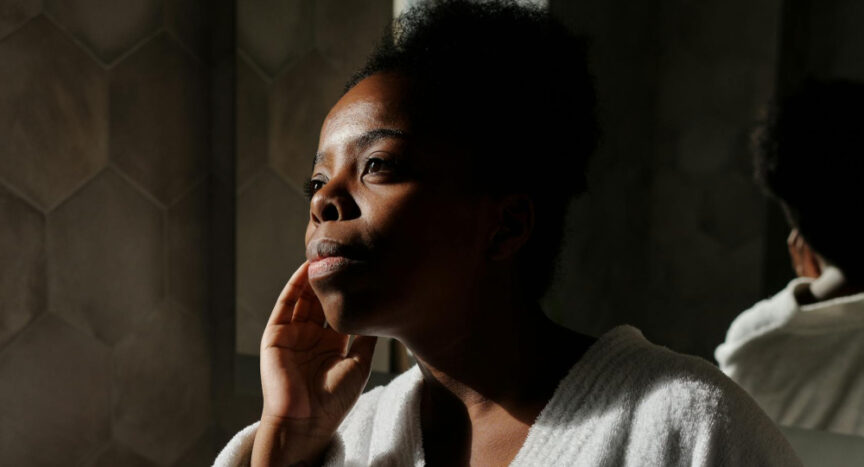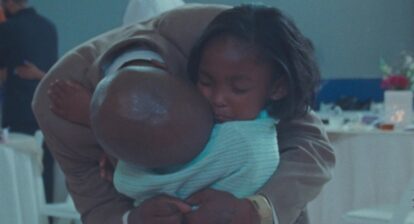“Rub a little vitamin E on your edges.”
“Tilt your head upside down so the blood stimulates your scalp.”
“Cut off all your hair so it can grow back stronger.”
These are just a few words of “advice” I’ve heard to deal with alopecia. As someone who has suffered with the condition for the past decade, I can assure you they aren’t helpful.
Losing hair shouldn’t seem like a big deal. But as a Black woman living in a Eurocentric society, not having hair has at times felt like a punch in the stomach, constantly challenging my notions of what beauty is. My solution? Arming myself with a full understanding of what alopecia is, how to treat it and how others have dealt with it has given me comfort and the power to do something about my condition.
“Alopecia is a term for hair loss, and it can take on many forms. You can see this both in males and females,” says Jeanine B Downie, MD, FAAD, director of Image Dermatology P.C. in Montclair, N.J. and assistant attending at Mountainside and Overlook Hospitals.
There are many types and causes of alopecia. Here are three of the most prevalent forms and advice on how to treat these conditions.
Life Changes and KeraLace
Traction alopecia occurs when the hair is repeatedly pulled or put under tension. Androgenetic alopecia, which represents hair loss in men and women, is often caused by medical issues, hormone imbalance and/or aging. My own alopecia is a combination of the two. Half of the population suffers from some form of hair loss.
“Alopecia can be scarring from heat or chemicals. It can be genetic; it can be from scratching or manipulating the hair follicles. It can be from tight braids and hairstyles, and/or from over-processing your hair by over-coloring, over-blowing drying or over-chemically treating it,” explains Dr. Downie. “Oral biotin from the internet typically does not work, and using black soap or avocado on your scalp does not work.”
Losing your hair isn’t just physical; it can be mentally devastating. I can attest to standing in front of the mirror, uncontrollably crying over the loss of my strands. “Mindsets can be very negative for some people, which is unfortunate,” Dr. Downie says. Cosmetic hair loss, which can include receding hairlines, pattern hair loss, or age-related thinning, isn’t often covered by insurance, adding to the mental strain of dealing with alopecia.
There are options for people like myself who are struggling with hair loss. Dr. Downie suggests trying some of these over-the-counter products to help slow down hair loss: “Nutrafol and DefenAge 150K Hair Follicle Serum can help some people decrease alopecia.”
Dr. Downie also recommends eating an anti-inflammatory diet with unprocessed food choices and less soy, exercising five days a week, getting adequate sleep and refraining from scratching your scalp.
For those looking for the next level of treatment, Dr. Downie offers KeraLace hair restoration for thinning hair. “Kerafactor contains five growth factors, stem cells and other scalp proteins. As long as you have hair follicles, it should be successful.” The procedure requires a minimum of six to eight treatment sessions followed by maintenance.
hair restoration for thinning hair. “Kerafactor contains five growth factors, stem cells and other scalp proteins. As long as you have hair follicles, it should be successful.” The procedure requires a minimum of six to eight treatment sessions followed by maintenance.
Using Rogaine
Rogaine® is a popular over-the-counter choice to combat hair loss. “Rogaine is approved to treat male and female pattern baldness or androgenetic alopecia (AGA), a common type of hair loss in men and women caused by a combination of genetics and hormones,” shares Paul LaTerra, director of R&D Global Hair & Scalp.
Women’s Rogaine is approved in two dosage forms: a 5% Minoxidil Foam once daily and a 2% Minoxidil Solution twice daily. A clinical trial proved these two formulations to be equivalent in efficacy, and the preference for one over the other can be based on lifestyle. According to LaTerra, Rogaine has been effective in treating AGA, helping all participants, regardless of variables such as age, pattern of hair loss or race, regrow thicker, fuller hair.
Alopecia Areata and Litfulo
Alopecia areata is a chronic autoimmune disease that causes hair loss. Your system causes hair loss by attacking hair follicles. “It’s when white blood cells come up to the surface of the scalp or surfaces of the skin, put that hair follicle to sleep,” shares Amy McMichael, M.D., a board-certified dermatologist and professor of dermatology at Wake Forest University School of Medicine.
Thankfully, there’s a new drug to combat this form of alopecia. Litfulo (ritlecitinib) disrupts and minimizes the white blood cells attack on the follicles. “It’s a treatment that has shown to be extremely effective,” she says. “It’s an oral medication, a 50-milligram pill daily.” Mild side effects can include nausea, vomiting, diarrhea, rash or headache, but aren’t typical on the drug.
(ritlecitinib) disrupts and minimizes the white blood cells attack on the follicles. “It’s a treatment that has shown to be extremely effective,” she says. “It’s an oral medication, a 50-milligram pill daily.” Mild side effects can include nausea, vomiting, diarrhea, rash or headache, but aren’t typical on the drug.
How can you tell if you have alopecia areata? “Alopecia is a very specific form of hair loss, and the way that it’s diagnosed is by a board-certified dermatologist,” Dr. McMichael explains. “There may be a biopsy that’s done. We use a dermatoscope, a small handheld light that magnifies what we’re looking at.” A positive pull test, where hairs come out easily around hair loss patches, can also be a sign of areata. Dr. McMichael also notes that this form of alopecia is female-predominant, “which is certainly in line with most autoimmune diseases.”
In our community, alopecia areata had often been undiagnosed because people of color weren’t originally thought to have the disease very commonly. “However, African American children and adults do get alopecia. That is something that I think we’re learning a lot more about. Every time I talk about alopecia, it’s really important that people recognize that it’s in all of our population, not just one race or ethnicity.”
Dr. McMichael says that anyone interested in taking Litfulo must see a board-certified dermatologist for baseline testing, a laboratory blood test, a lipid profile, etc., to rule out any underlying issues. It is a long-term medication, and again, insurance can be a challenge when trying to get hair loss prescriptions.
“Many insurance companies will require that the patient has 50% or greater hair loss of the scalp,” Dr. McMichael says. “But certainly, we know that patients can have 20% hair loss on the scalp and be very, very psychologically affected. So, we work with the insurance companies to try and get medications for the patients who need them.”
Dr. McMichael wants to remind everyone that alopecia areata is a medical disease. “They have a psychological overlay, but they are medical conditions that are treatable with medical treatments. The appropriate treatments can really lift a great weight from patients and their family members because their family members are going through this, too. I’ve seen patients’ lives change from being on Litfulo.” Finding support can also alleviate the mental effects of alopecia. Groups like the National Alopecia Areata Foundation offer guidance and camaraderie.
Growing Hope
Restoring your hair can seem daunting and impossible. But seeing a dermatologist to help identify your type of alopecia, exploring treatment options to optimize hair regrowth therapy and knowing there are options like the ones above can be the first steps to restoring your strands of confidence.





